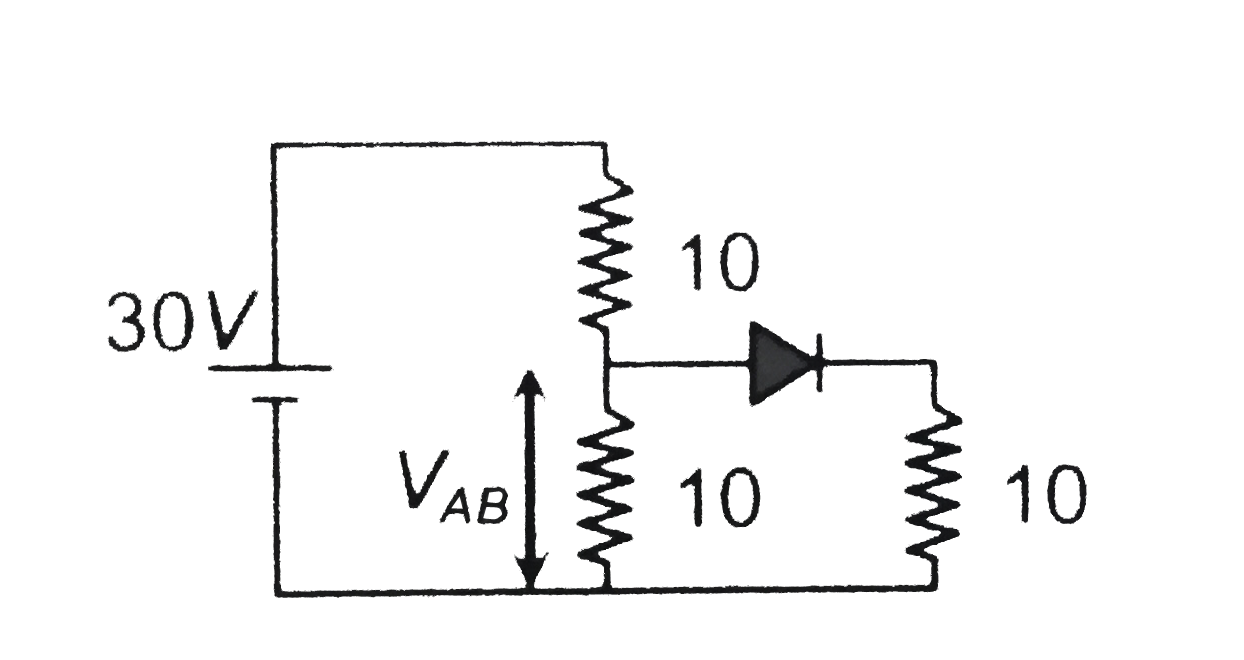Statement-I : When base region has larger width, the collector current decreases.
Statement-II : In transistor, sum of base current and collector current is equal to emitter current.Solution in Gujrati
Statetment-I is True, Statement-II is True , Statement-II is a correct explanation for Statement-I
Statement-I is True, Statement-II is True , Statement-II is NOT a correct explanation for Statement-I
Statement-I is True, Statement-II is False
Statement-I is False, Statement-II is True
The correct Answer is:B
Step by step video & image solution for Statement-I : When base region has larger width, the collector current decreases. Statement-II : In transistor, sum of base current and collector current is equal to emitter current. by Physics experts to help you in doubts & scoring excellent marks in Class 11 exams.
Updated on:21/07/2023Topper's Solved these Questions
- SEMICONDUCTORSBOOK - ALLEN CHAPTER - SEMICONDUCTORSEXERCISE - Part-3(Exercise-4)
50 Videos
- SEMICONDUCTORSBOOK - ALLEN CHAPTER - SEMICONDUCTORSEXERCISE - Part-3(Exercise-2)
49 Videos
- PHYSICAL WORLD, UNITS AND DIMENSIONS & ERRORS IN MEASUREMENT BOOK - ALLEN CHAPTER - PHYSICAL WORLD, UNITS AND DIMENSIONS & ERRORS IN MEASUREMENT EXERCISE - EXERCISE-IV
7 Videos
- WAVES AND OSCILLATIONSBOOK - ALLEN CHAPTER - WAVES AND OSCILLATIONSEXERCISE - Part-1(Exercise-05)[B]
42 Videos
Similar Questions
At absolute zero temperature Si acts as ……..
View SolutionFind VAB

View SolutionAssertion : Gravitational forces do not depend on the medium between the masses.
Reason : Mediating particle responsible for gravitational force is graviton.
View SolutionA string of length 0.4m and mass 10−2kg is clamped at one end . The tension in the string is 1.6N. The identical wave pulses are generated at the free end after regular interval of time , Δt . The minimum value of Δt , so that a constructive interference takes place between successive pulses is
View SolutionStatement-I : When base region has larger width, the collector current decreases. Statement-II : In transistor, sum of base current and collector current is equal to emitter current.
View Solutionट्रांजिस्टर की संग्राहक धारा , आधार धारा तथा उत्सर्जक धारा में क्या संबंध होता है ?
View Solutionट्रांजिस्टर की संग्राहक-धारा, आधार-धारा एवं उत्सर्जक-धारा में क्या सम्बन्ध होता है ?
View Solutionट्रांजिस्टर की संग्राहक धारा, आधार धारा एवं उत्सर्जक धारा में क्या सम्बन्ध होता है ?
View Solutionयदि IE,IB तथा IC ट्रांजिस्टर परिपथ में क्रमशः उत्सर्जक धारा, आधार धारा तथा संग्राहक धारा हो, तब -
View SolutionIn the study of transistor as an amplifier, the ratio of collector current to emitter current is 0.98 then the ratio of collector current to base current will be
View SolutionCurrent gain of a common-emitter transistor amplifier is 50. If the emitter current is 6.6 mA , calculate collector current and base current.
View SolutionIn a transistor, give the relation between collector current, base current and emitter current.
View SolutionA common emitter (CE) transistor has a current gain of 100. If emitter current is 8.08 mA, find the base and collector current.
View Solution(A): When the base region of a transistor has large width, the collector current decreases (R): Electron hole combination in base results in increase of base current
View SolutionThe emitter current in a transistor is 2.2mA and the collector current is 2mA. The base current is
View SolutionWhile a collector-emitter voltage is constant in a transistor, the collector current changes by 8.2mA when the emitter current changes by 8.3mA. The change in base current is
View Solution
